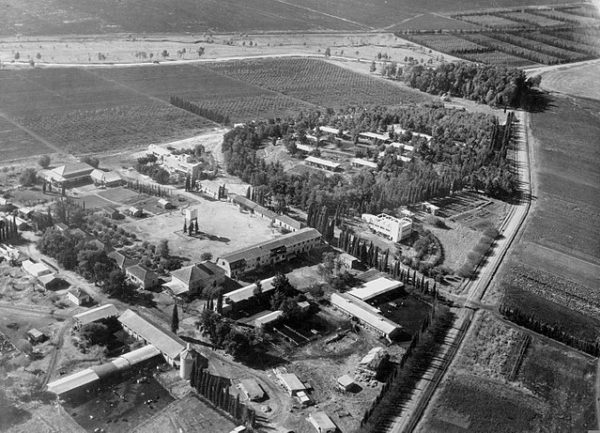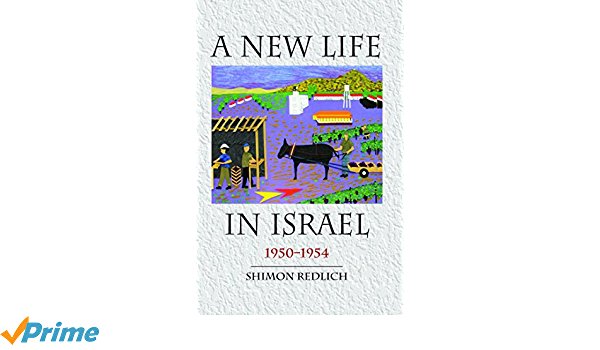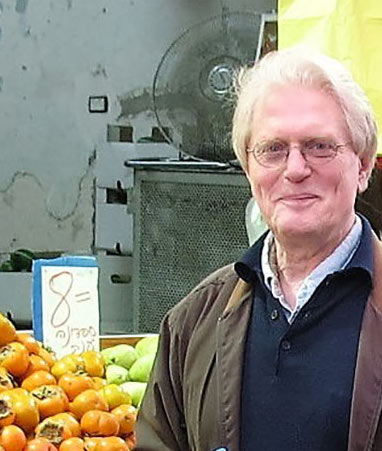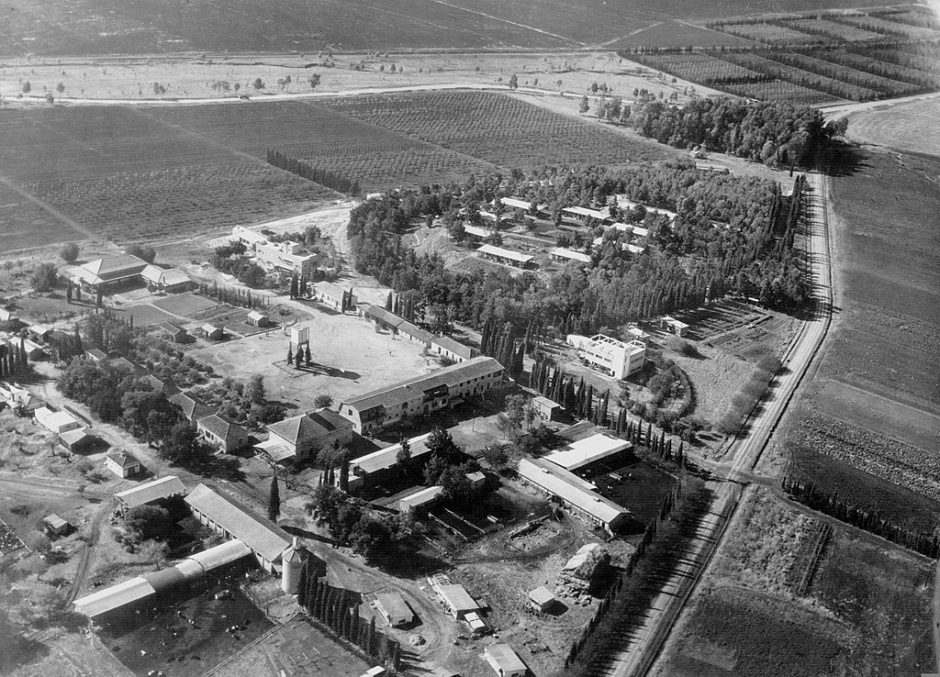Shimon Redlich and Gabriel Shapiro immigrated to Israel as young men. Both have written engaging memoirs about their experiences in the Jewish state, which marks its 70th anniversary on May 14 by the Gregorian calendar.
Redlich, a Ukrainian Jew, arrived in Israel in 1950 by way of Poland. In A New Life in Israel (Academic Studies Press), he focuses on the kibbutz that would be his home for more than a year. Shapiro, a Russian Jew, immigrated to Israel in 1972. In Thanksgiving All Year Round (Academic Studies Press), he discusses his formative years in the Soviet Union and his six-year sojourn in Israel, which proved to be of great importance to him personally.

Redlich, a history professor at Ben-Gurion University of the Negev for nearly 40 years, was born in Lwow in 1935 and was a child survivor of the Holocaust. After the war, he found himself in the Polish city of Lodz. On February 7, 1950, he and his mother landed in Haifa aboard the ship Galila and were met by relatives who had settled in the country in the 1920s and 1930s and had been among the founders of Kibbutz Merhavia in the Jezreel Valley.
As he points out, he and his mother made aliya in a year when 170,000 new immigrants set foot in Israel, a nation dedicated to absorbing newcomers. The majority were settled in 58 temporary transit camps known in Hebrew as maabarot. Kibbutzim attracted relatively few immigrants, but Redlich lived in Merhavia when the prestige of the kibbutz was at its peak.
The winter of 1950 was the harshest in decades, with Israel blanketed in snow from north to south. As he recalls in one of his earliest memories of the kibbutz, “People were walking at night in snow-covered, moonlit fields enchanted by views that reminded them of their old country.”

Merhavia, which had been established by East European Jews in the 1920s, had a profound effect on him. “It was there that I would actually turn into an Israeli. I was placed in the Merhavia boarding school in the early spring of 1950 and would remain there until the summer of 1951. However, the impact of these fifteen months was enormous.”
In his keenly observant book, Redlich recalls the kibbutz way of life and its personalities.
Boys and girls lived together in the same dormitory. “It was the first time I’d ever lived or slept with strangers. This was something completely new to me, both difficult and exciting. The dressing and undressing of the girls aroused me. I stared furtively at their firm young breasts.” He also had to accustom himself to communal showers.

He was issued standard kibbutz clothing: underwear, socks, pants, shirts, a sweater, an army-style jacket and a kova tembel, the fool’s hat, to protect himself from the sun.
Much to his disappointment, he discovered that the kibbutz had a negative attitude toward higher education.
Redlich’s pen portraits of kibbutzniks are candid.
He describes Meir Yaari, its most prominent member and the leader of the Kibbutz Haartzi movement, as a stubborn person who enjoyed the amenities of his position, who never forgave people who challenged him and who avoided cultivating close friendships. He has only kind words for Michal Bat Adam, who would become a leading Israeli film star.
Redlich left Merhavia to live with his mother in neighboring Afula, which started as the Arab hamlet of Fula and developed into “a rather small provincial town.” Settled in the mid-1920s by mainly Polish Jews, Afula grew with the influx of Jewish immigrants from Romania, Iraq and Yemen. “My years in Afula coincided with that period,” he notes.
“Comparing my first years in Israel with my postwar and post-Holocaust years in Lodz, it seems, perhaps surprisingly, that I was happier in Lodz than in Israel. My relative standing among my peers was much higher in Lodz than in either Merhavia or Lodz. In Lodz, I was the teacher’s pet. In Israel, I was just one of the bunch, if that. Only years later, when I started my academic studies and career, would my self-esteem recover itself.”
Redlich devotes a chapter to his army service. Inducted in August 1954, shortly after completing his high school matriculation exams, he writes of the trials — humiliation, isolation, lack of privacy and physical and psychological pressures — that he faced as a raw recruit. More to the point, he explains the role the Israeli army played in integrating new immigrants into society.
In 2009, he returned to Merhavia on a visit. “It was a pale imitation of the thriving place that lives on in my memory. It was now bleak and neglected.” In retrospect, Merhavia had both positive and negative aspects. he says, quoting various people. “One of the old timers spoke of modesty, extreme earnestness and restrained romanticism.” Still others, especially the younger generation, were more critical. “They mentioned the small-town mentality and the malicious gossip that affected relations among neighbors.”
He ends on a neutral note: “The era in Israel of which I am writing has passed. I hope that this book succeeds in presenting some features of society in the early years of the state, and that it bears witness to the adjustment of one young immigrant — one among thousands — to the realities of a new life in Israel.”
Shapiro’s life can be divided into three segments: 27 years in the Soviet Union, six years in Israel and 37 years and counting in the United States.
Deprived of elementary freedoms, he felt stifled in his homeland. “My existence under the totalitarian Soviet regime was further exacerbated by widespread antisemitism. As a result, from early childhood on, I was made to feel unwelcome in Soviet Russia. This sentiment compelled me to question my identity and to look for an alternative. Under the influence of the Zionist ideology, which I imbibed from my father and his close friends, I came to the realization that Israel … was my home, the country where I aspired to live.”

While in Israel, he abandoned chemistry, the subject he had studied at Moscow University, and took a degree in Russian studies at the Hebrew University. “This degree became a stepping stone for my further education and development as a Slavist.” He then served in the Israeli army. Unable to find suitable employment in Israel, he forged a successful academic career at Cornell University in the United States. But he regularly returns to Israel for about two months at a time.
Shapiro’s father, an aircraft engineer, settled in Israel before his son. Yet tragically enough, he was killed in a terrorist attack in July 1989, leaving behind his wife, a physician who had not been keen to live in Israel.

Born in 1945, Shapiro aspired to be a doctor, but his parents were concerned that, as a Jew, he might be denied a place at medical school. Given the endemic antisemitism that plagued Jews, he never considered the Soviet Union as his home. “In my family, there was always a clear distinction between ‘us’ and ‘them.'”
As long as he remembers, his father talked about the possibility of going to Israel. The outbreak of the Six Day War in 1967 made them realize that their hearts and loyalty belonged to Israel. In the wake of that war, there was an upsurge of antisemitism. “The Soviet authorities decided to turn the screws on their own Jews,” he says. And Zionism was equated with fascism.
Shapiro applied for an exist visa, but was refused. Finally, on November 3, 1972, he made it to Israel. It was, for him, a euphoric moment. He greatly enjoyed living in Israel, particularly in Jerusalem, and sought to blend in.
In 1983, as he completed his PhD, he was offered a lectureship at Illinois State University. He accepted it, but hoped to eventually obtain a similar position in Israel. “This wish of mine, regrettably, never materialized,” he muses. In the meantime, he notes, his first marriage to an American broke up.
Shapiro taught at Cornell for the next three decades. “When I was growing up in Soviet Russia, never did I imagine in my wildest dreams that I would be spending most of my adult life outside the Iron Curtain and benefiting from the liberties and freedoms accorded to people in the democratic societies of Israel and the United States,” he observes, nicely rounding out Thanksgiving All Year Round.
